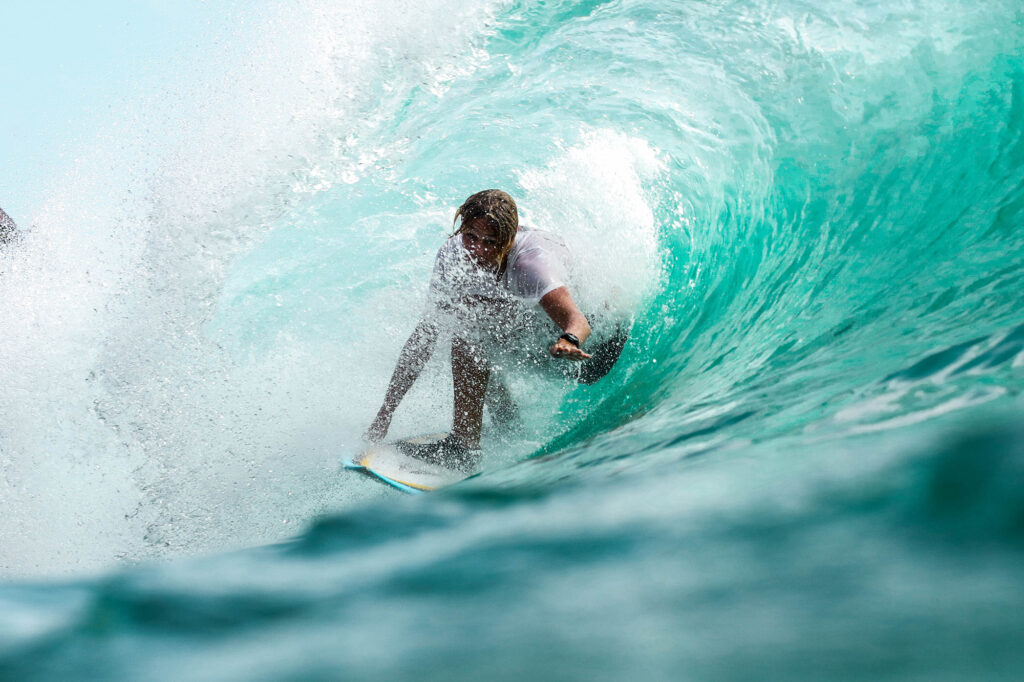Everyone loves buying new gear for their sport. Each season there are new colours, new technology and the promise of enhanced performance. It’s comfortable, functional and looks good too. In an Instagram age this is often very important to us.
But what impact is our careless consumption of sports clothing and shoes having on the planet? And what can we do to be more eco-friendly way when it comes to sports kit?
The first thing we have to ask ourselves is:
Do we really need to buy a new jacket or pair of shoes?
Production of sportswear is continuing to grow, and every garment produced contributes to CO2 emissions and water pollution. Shoes and sportswear are generally made from fabrics and materials that are plastic or petroleum dependent. So we have to try to limit our purchases.
If there is no choice but to buy something new, then we should look carefully at what’s on offer. It’s not always easy to identify a truly ethical product. We need to research it well and buy an item which will last. One well-chosen, good quality jacket will have less impact on the environment, than a shoddy garment that lets in wind and rain after one season, and needs to be replaced.
Conscious of the large carbon footprint of their products, and under pressure from consumers to reduce their impact, manufacturers are working to create more eco-friendly items.
Shockingly, most running shoes are worn for 4- 6 months and then end up in landfill where they take up to 11,995 months to decompose. Surely we can do better than this.
Where does the problem lie?
Up until now the shoes were made from many different materials making them difficult to separate. Leading manufacturers like Nike and Adidas have invested in sustainable fabrics such as recycled synthetic fabrics. Smaller actors like Veja have followed. Nike also offer shoes on subscription. When they take back the used shoes they reuse elements for running tracks. Eco-friendly shoes are not yet a perfect solution but such shoes have 50% less carbon footprint than the majority of shoes in the market today. The Adidas FUTURECRAFT.LOOP is a project to develop shoes that are made from one fabric and which can be recycled for the next generation of shoes. Projects like this give us hope for the future.
In the meantime, when you next need to buy shoes, look carefully and try to understand what the greenest option is before buying.
Sports clothing isn’t generally any greener than shoes, as many of the fabrics used are manufactured in an environmentally unfriendly way, and aren’t always recyclable.
However, manufacturers are making efforts to improve the materials and ensure a circular product life.
Helly Hansen have innovated to develop a high-tech and sustainable water and weather repellent textile. In addition, the process for dyeing the fabric consumes less water than previous methods. Henri-Lloyd also the same dye method for some of its products.
Many producers are working to lower their impact by using greener components to create textiles. Merino wool, bamboo, corn, cassava and wheat are natural materials which can be used, but for now they are usually in combination with other synthetic materials to ensure performance. No one wants a base layer which is damp and cold after ten minutes.
Other actions by manufacturers include offering a repair service and taking back used products for recycling. Some add the criteria of local manufacturing and limited delivery distance into the circular model, further strengthening the green mix.
Sailing brand Musto took steps to use more recycled plastic, and reduce the plastic packaging on their garments, saving 11,000 kg of plastic each year. Rubymoon uses regenerated nylon from waste collected from the seas to produce swim- and activewear. The high-quality durable material lasts longer than similar products.
Other sports have their eco-warriors too. There are skis made from ethically sourced bamboo and jodhpurs for horse-riding produced from discarded carpets, on the market.
As well as choosing the right products, we can contribute by taking good care of our gear, and repairing it and not over-washing will extend the life of the item. If we no longer need something we can re-sell or donate it.
We need to look at the product, how it is made, and then take our own eco-friendly decisions throughout the full product life cycle:
- Acquisition: do we need it?
- Care: taking the best care of it when in use
- Disposal: can we resell, donate or recycle. Landfill should be avoided where possible.
“Only if we all take these steps, and encourage others to do so too, will we reduce the damage that sports gear is doing to the planet we love.



